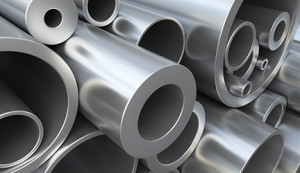 The global market for high performance alloys industry is growing with a forecast consume over 400kt in 2014. This success is happening thanks to its heavy use within the aerospace sector fueled by heavy demand for long haul aircraft from Boeing and Airbus. There is a silver lining, however, in the form of rising demand from growing economies like India, China, Thailand, and South Korea. This growth in demand is expected to benefit the steel producers in terms of price, revenue, and margin.
The global market for high performance alloys industry is growing with a forecast consume over 400kt in 2014. This success is happening thanks to its heavy use within the aerospace sector fueled by heavy demand for long haul aircraft from Boeing and Airbus. There is a silver lining, however, in the form of rising demand from growing economies like India, China, Thailand, and South Korea. This growth in demand is expected to benefit the steel producers in terms of price, revenue, and margin.
We also expect the market to grow slightly above the level of global output and this is due to the vital industries that the high performance alloys are chiefly used in such as energy generation and medical care which are not directly correlated to global output. However leading industries that use high performance alloys such as the general industrial sector are highly correlated with global manufacturing output.
The shipments of United States Steel’s tubular products stood at 1.88 million tons last year and are expected to increase by 2% this year. Drilling during oil extraction requires tubular products, and since there has been a recent increase in the price of natural gas and oil, the oil companies are increasing production. This will in turn increase the demand for tubular products. Overcapacity in the tubular products segment is likely to hurt the company’s future pricing power, however. The supply and demand of tubular products corresponds with the number of rig counts because the rigs are the major user of these products. According to analysts, the number of rigs in North America will be 2,350 by 2016, which will lead to a demand of around 8.6 million tons of tubular products based on a consumption of 3,600 tons of tubular products per rig. This implies an increase of 0.9 million tons over the current consumption of 7.7 million tons.
Between 2013 and 2016, there are ten new tubular production facilities coming into operation in the U.S. These new mills will add 3.1 million tons to the current production capacity of 11.9 million tons, which could lead to a build-up of inventory. This build-up could stagnate prices at an average $1,000 per ton. This inflexibility in pricing is hurting United States Steel as its input costs are rising; as a result, the consensus of analyst estimate its revenue is likely to be $17.79 billion this year and increase to $18.6 billion next year.
United States Steel continued to suffer from the oversupply of tubular products and cannot take advantage of increased oil extraction activities in the U.S. Meanwhile, the demand for high-end alloy steel from automobile industry in China and is also increasing creating new market for these steel manufacturers.



